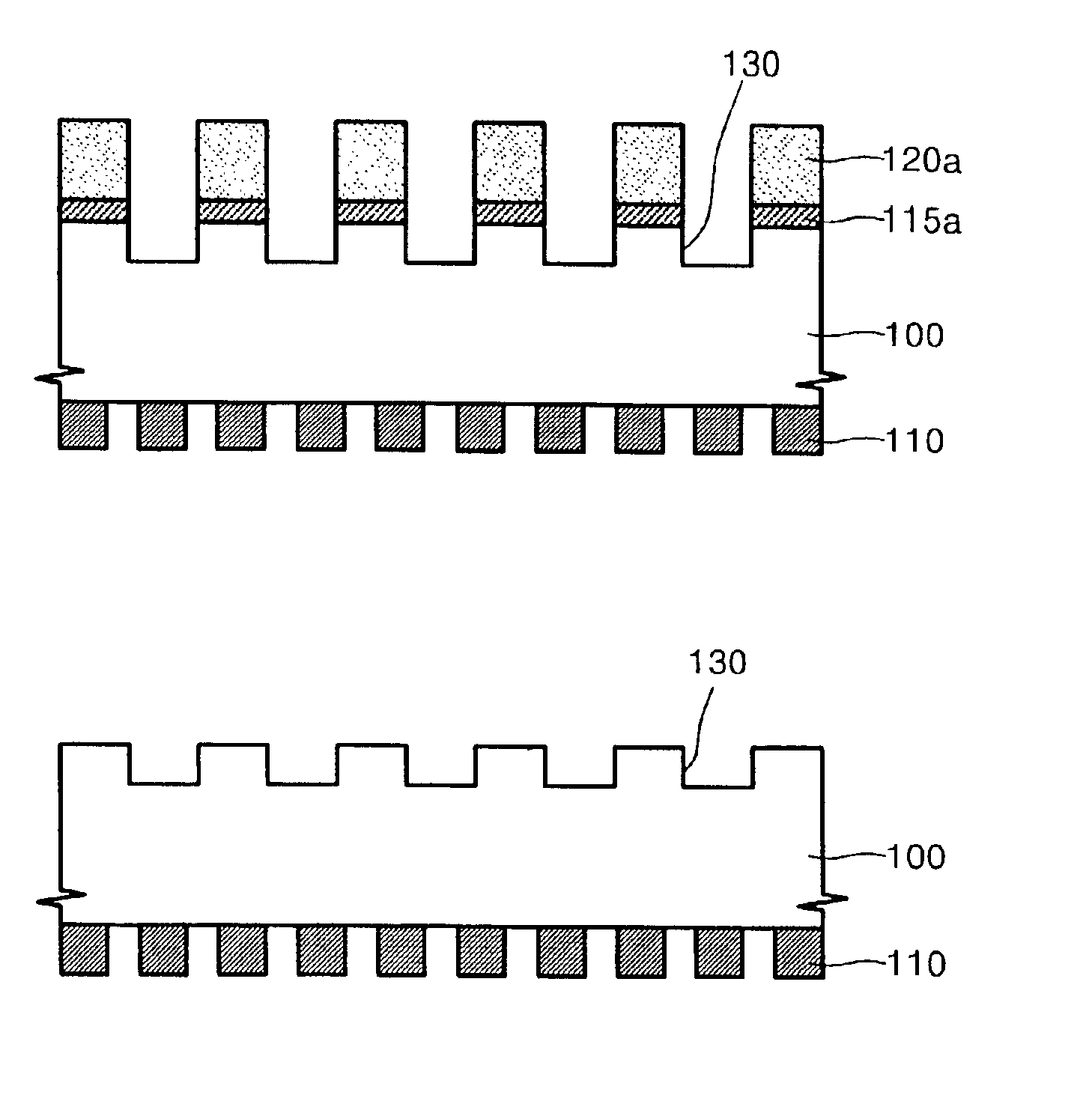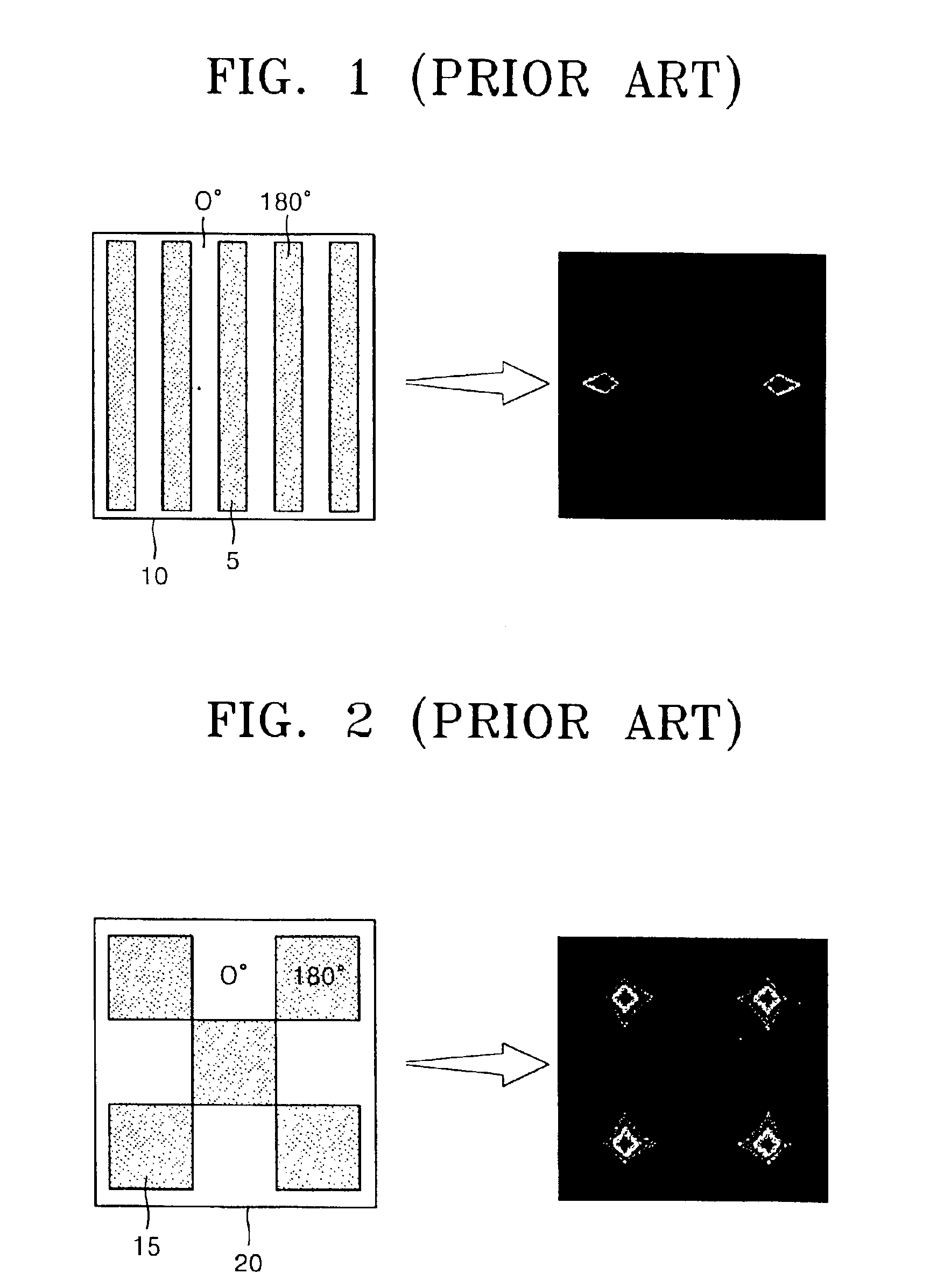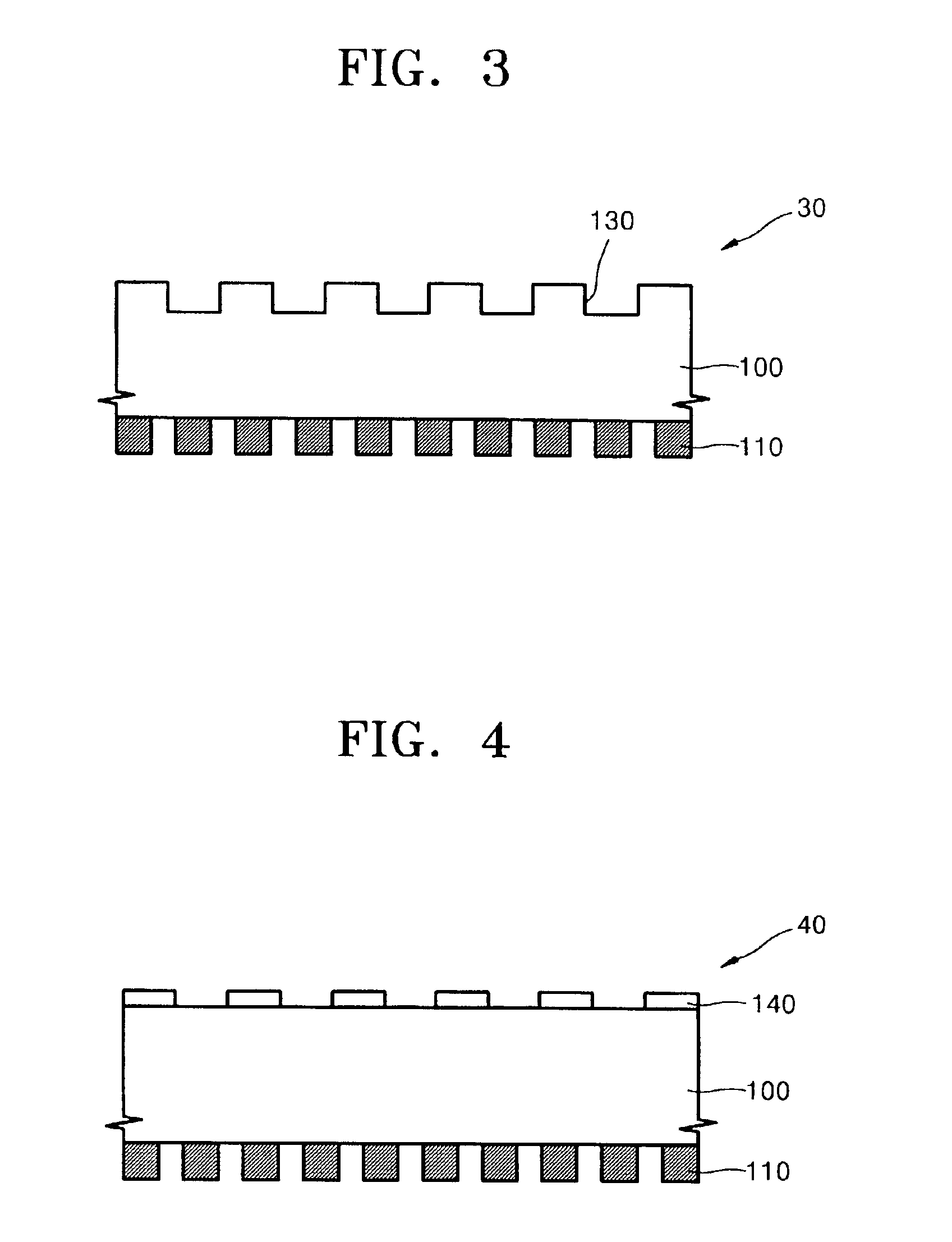Photomask for off-axis illumination and method of fabricating the same
a technology of off-axis illumination and photomask, which is applied in the direction of photomechanical equipment, originals for photomechanical treatment, instruments, etc., can solve the problems of limited resolution which can be achieved, practicably impossible to employ the method in mass production, and difficult to form patterns in the x and y-directions and the diagonal direction under only one illumination condition
- Summary
- Abstract
- Description
- Claims
- Application Information
AI Technical Summary
Benefits of technology
Problems solved by technology
Method used
Image
Examples
first embodiment
Referring to FIG. 3, a photomask 30 according to the present invention is formed on a transparent substrate 100. The transparent substrate 100 is formed of glass or quartz. A plurality of opaque patterns 110 for defining a floodlighting portion for forming patterns are formed on the front surface of the transparent substrate 100. The opaque patterns 10 may be patterns for forming a DRAM but are not limited to this. The opaque patterns 10 may be formed of a proper opaque material, for example, chrome (Cr).
A plurality of phase gratings 130 are formed on the back surface of the transparent substrate 100. As shown in FIG. 3, the plurality of phase gratings 130 have regularly periodical unevenness. Here, the phase gratings 130 are formed by etching the back surface of the transparent substrate 100.
second embodiment
Referring to FIG. 4, a photomask 40 according to the present invention includes a transparent substrate 100, a plurality of opaque patterns 10 that are formed on the front surface of the transparent substrate 100, and a plurality of phase gratings 140 that are formed on the back surface of the transparent substrate 100. The phase gratings 140 are formed together with the transparent substrate 100 as one body. Specifically, a material layer having a phase difference, such as a spin on glass (SOG) layer, is formed on the back surface of the transparent substrate 100 and then etched to form the phase gratings 140.
The phase gratings included in the photomasks 30 and 40 are formed to allow off-axis illumination (OAI) of an incident light source beyond the OAI limit of exposure equipment, to allow use in the outmost region of an aperture, and to allow modified illumination in a shape suitable for the layout of the opaque patterns. Although an arbitrary proper phase grating is used in the ...
PUM
 Login to View More
Login to View More Abstract
Description
Claims
Application Information
 Login to View More
Login to View More - R&D
- Intellectual Property
- Life Sciences
- Materials
- Tech Scout
- Unparalleled Data Quality
- Higher Quality Content
- 60% Fewer Hallucinations
Browse by: Latest US Patents, China's latest patents, Technical Efficacy Thesaurus, Application Domain, Technology Topic, Popular Technical Reports.
© 2025 PatSnap. All rights reserved.Legal|Privacy policy|Modern Slavery Act Transparency Statement|Sitemap|About US| Contact US: help@patsnap.com



